Navigating the waterways on a sailboat often presents unique challenges, and bridge clearance is a common concern for sailors. Typically, the sounds of passing under a bridge are gentle: a “tink, tink, tink” as your VHF antenna grazes the underside. However, venture into certain waterways, and you might encounter bridges that demand a more creative approach, especially if your mast stands tall. This is the story of how we performed the “Limbo Dance” with our sailboat, Blue Wing, to navigate under the Port Mayaca Lift Bridge on Florida’s Okeechobee Waterway.
For years, our sailing adventures took us eastward from Indiantown marina towards the Bahamas, effortlessly gliding under the fixed bridges of Florida’s ICW with our 50-foot mast. But this year, our destination was Mexico, lying to the west coast of Florida. This meant a westward turn into the Okeechobee waterway, a route bisecting Florida through Lake Okeechobee, connecting the Atlantic and Gulf coasts. This new direction presented an exciting prospect, a journey through uncharted waters for us, with just one looming obstacle: the Port Mayaca Lift Bridge.
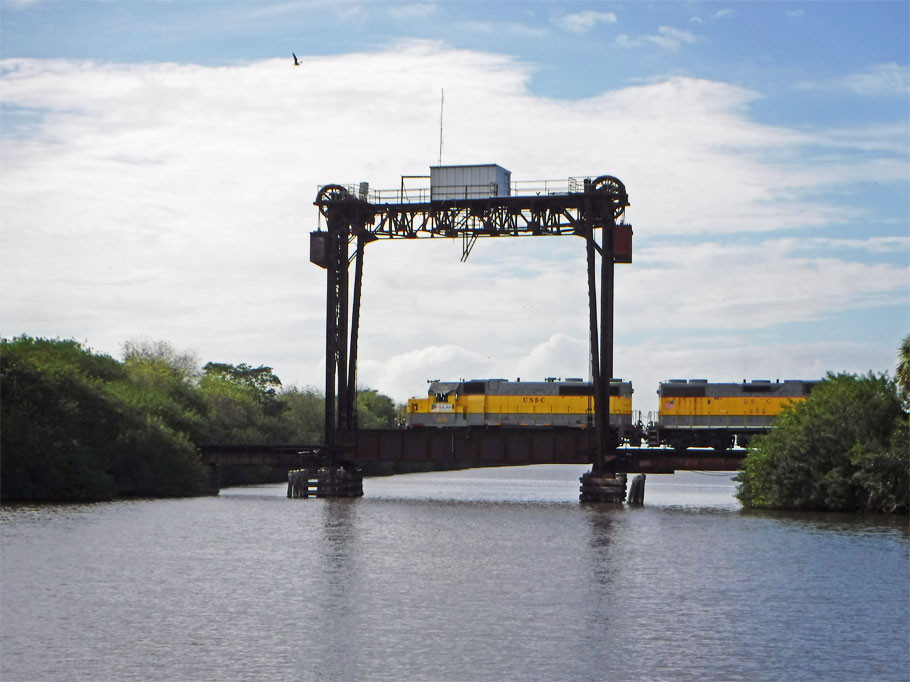 What is looks like when a train crosses the bridge.
What is looks like when a train crosses the bridge.
The Port Mayaca Lift Bridge, primarily used for transporting sugarcane, is a railroad bridge with a unique lifting mechanism. Unlike drawbridges, it raises its central section vertically, reaching a clearance of 49 feet above the water. Unfortunately for us, Blue Wing’s mast measured 50 feet, putting us just a foot too tall to pass comfortably underneath.
Enter the “Okeechobee Limbo,” a local solution for sailboats with masts exceeding the bridge’s clearance. This ingenious technique involves intentionally heeling the boat to reduce mast height, allowing passage under the bridge. Professional services are available, where individuals like “Billy” use water-filled drums to list the boat, typically costing between $150 and $300. While this service is convenient, we, being resourceful sailors, decided to embrace the DIY spirit and perform the limbo dance ourselves, saving those hard-earned dollars for more exciting ventures.
Sailboats are inherently designed to heel, or lean, with the wind. Even weight shifts on deck can induce a noticeable tilt. Given we only needed to shave off a foot of height, we were confident in our ability to induce enough of a list to safely navigate under the bridge. Our plan was set: Blue Wing would perform her own version of the limbo dance.
On a Monday morning, we embarked from Indiantown, heading west towards the infamous Port Mayaca Lift Bridge. En route, a crucial step was to check the US Army Corps of Engineers website for the bridge’s current height. Water levels fluctuate due to lock operations along the waterway, directly impacting bridge clearance. Fortunately, the website indicated a clearance of 49.15 feet that day, giving us a slightly tighter but manageable margin. After a couple of hours of motoring, we arrived at the bridge, anchored, and initiated our plan.
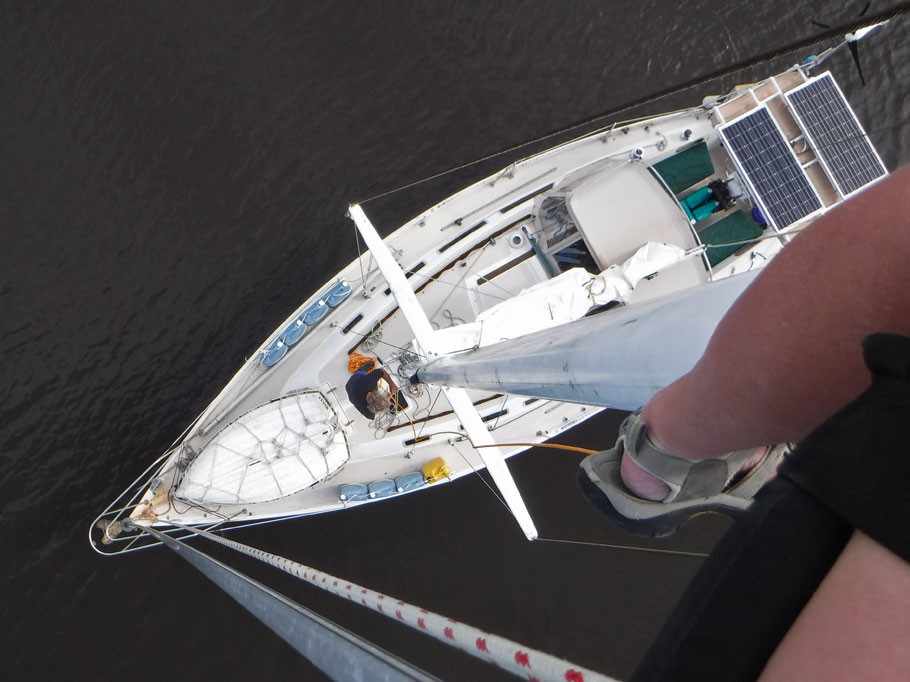 View from the top of the mast.
View from the top of the mast.
Our first task was to precisely ascertain Blue Wing’s mast height. While documentation stated 50 feet, sailboats are often customized, with additions like antennas, wind vanes, and lights potentially altering the overall height. To get an accurate measurement, I ascended the mast in a bosun’s chair, equipped with a makeshift measuring tool – a rope marked in foot increments. This exercise revealed our true vertical dimensions: 49 feet to the top of the anchor light, 50 feet to the wind vane, and 51 feet to the tip of the VHF antenna. Since the antenna was flexible, our critical clearance target was 50 feet, the height of our wind vane.
With the mast height confirmed, we rigged a safety measure. We attached our measuring line to a halyard, running it to the masthead with a fender at the end. This acted as a water level indicator, set to touch the water when the mast was tipped to a 48-foot equivalent height, ensuring a comfortable one-foot buffer beneath the 49-foot bridge.
The next phase was inducing the list. We had already pre-loaded the port side by stowing heavier items like a sewing machine, books, and of course, Greg’s beer, on the port settee. However, more weight was needed. We transferred all portable heavy items – water jugs and propane tanks – to the port side deck. Blue Wing was tilting noticeably, but not quite enough to confidently clear the bridge.
 Greg fills Fever with river water.
Greg fills Fever with river water.
To amplify the heel, we enlisted our dinghies, Fever and Jethrine, as ballast. I had previously fashioned a net for Fever. Our initial plan involved extending the spinnaker pole, suspending Fever in the water from it, and filling Fever with water to pull the mast down as we winched the pole. Greg would manage Fever from Jethrine.
This approach proved challenging. Fever’s irregular shape made controlling its center of gravity when filled with water difficult. Each time we winched, Fever would tilt, spilling water back into the waterway, a less-than-efficient “limbo dance” technique.
Our efforts had attracted an audience. Word of the “tipping party” had spread through the marina, and spectators gathered to witness the spectacle. After four hours, the initial crowd, perhaps losing interest, dispersed. However, a fresh wave of onlookers arrived, eager for the main event – our sailboat limbo performance.
After reassessing, we devised a refined strategy. We pre-raised the empty Fever, then Greg, in Jethrine, stabilized it while filling it with water. Simultaneously, I would pilot Blue Wing towards the bridge. Our water-level indicator was tantalizingly close to the surface, suggesting we were near the required heel angle, especially considering the extra clearance we aimed for. It was time to commit to the limbo.
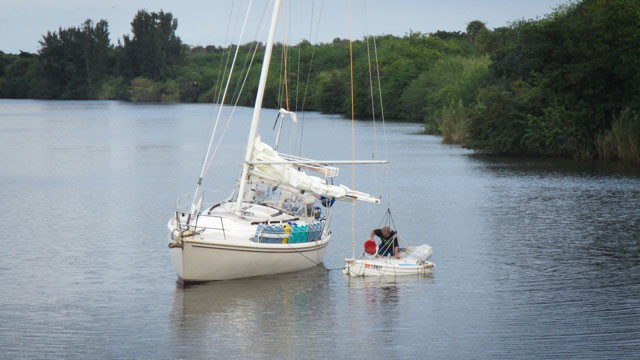 Greg fills Fever with water as we head for the bridge. (photo courtesy of Liz and Chris)
Greg fills Fever with water as we head for the bridge. (photo courtesy of Liz and Chris)
With Fever secured and Greg adding ballast, I slowly steered Blue Wing towards the bridge. Our friends stood on the bridge’s edge, providing a cheering section. Looking upwards, the bimini obscured my mast’s peak. We were approaching the critical moment, the point of no return in our sailboat limbo. Then, I heard it.
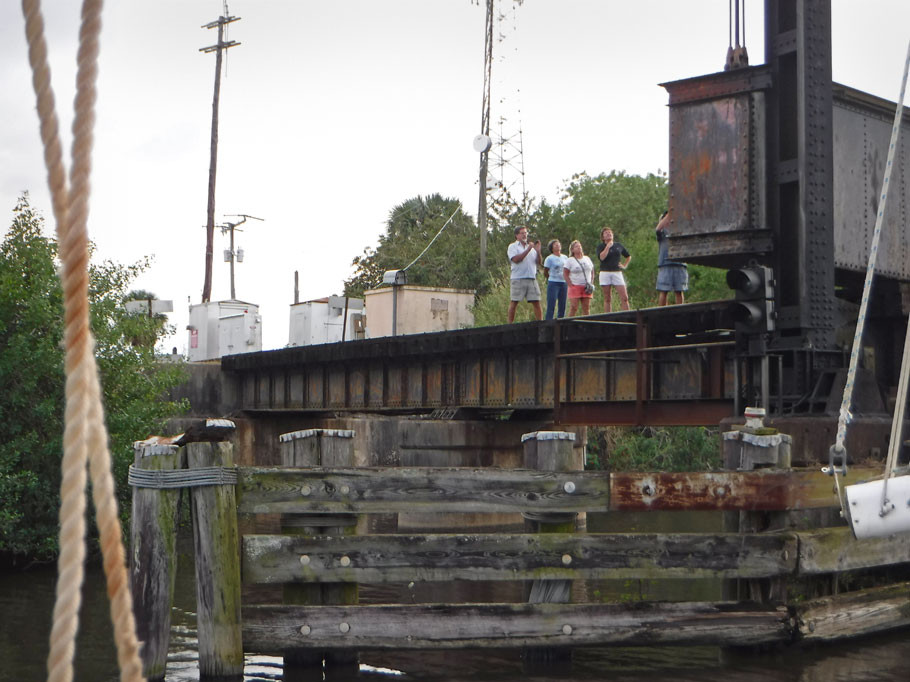 Crew number 2 cheering us on as we go through.
Crew number 2 cheering us on as we go through.
Cue the mental limbo music. “Tink, tink, tink.” Our flexible antenna gracefully bent backwards, brushing against the bridge’s underside as Blue Wing glided triumphantly to the other side. We had successfully performed the Okeechobee Limbo! The immediate reward? Offloading ballast and cracking open some of that port-side beer.
Mastering the Sailboat Limbo Dance: Key Takeaways
- Accurate Mast Height Measurement: Know your boat’s true height, including all masthead additions.
- Bridge Clearance Information: Always check real-time bridge clearance data, especially in waterways with variable water levels.
- Weight Management: Strategic weight placement is crucial for inducing heel. Utilize onboard resources and consider dinghy ballast.
- Safety First: Implement safety measures like a water-level indicator to monitor heel angle.
- Teamwork and Adaptability: Be prepared to adjust your plan based on real-time observations and challenges.
- Embrace the Adventure: The “limbo dance” is a testament to resourceful sailing and adds a memorable chapter to any boating journey.
This DIY approach to navigating low bridges, the “limbo dance,” offers a cost-effective and adventurous alternative to professional services. It embodies the spirit of sailing – resourcefulness, problem-solving, and a touch of daring. So, the next time you encounter a low bridge, consider putting on your own limbo show – just remember to check your mast height and maybe bring an audience!
(Note: For an alternative perspective on this adventure, check out Ellen’s blog post at Cynical Sailor Blog. For a video of our limbo dance, find me on Facebook.)**

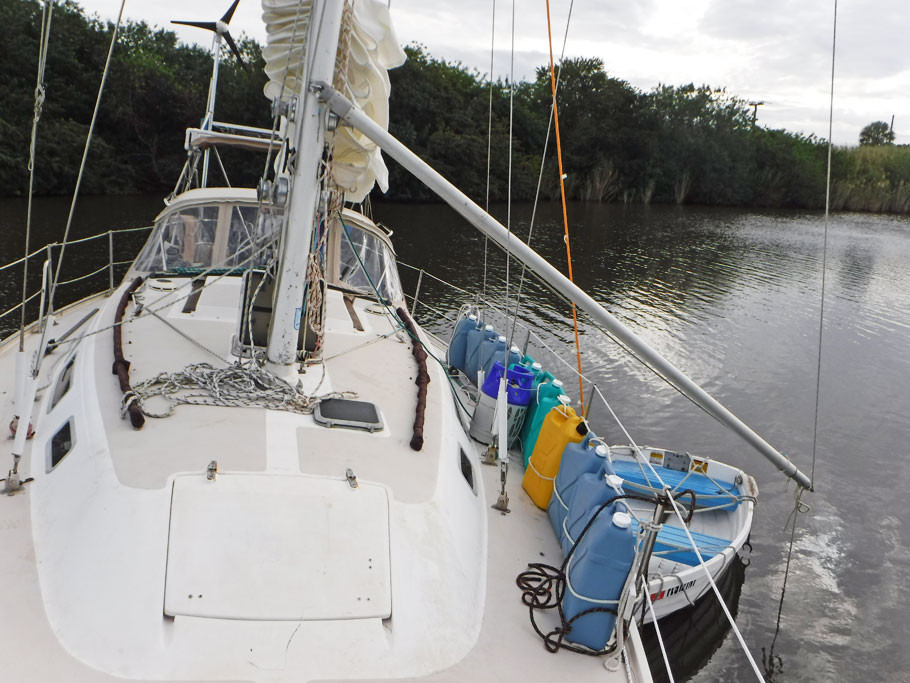 Blue Wing starting to tilt.
Blue Wing starting to tilt.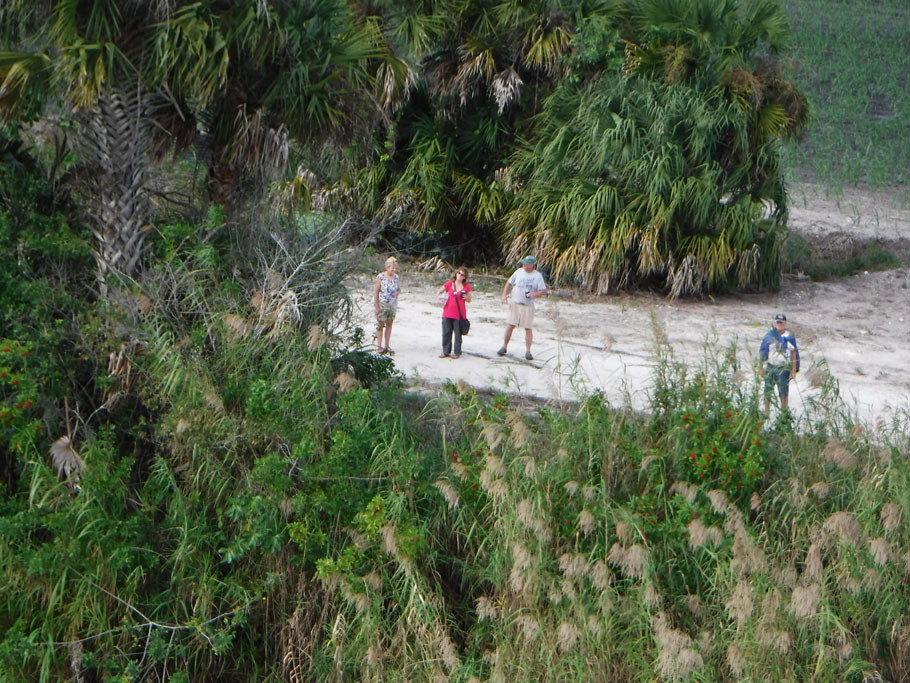 Crew number 1 watching.
Crew number 1 watching. Going through bridge.
Going through bridge.